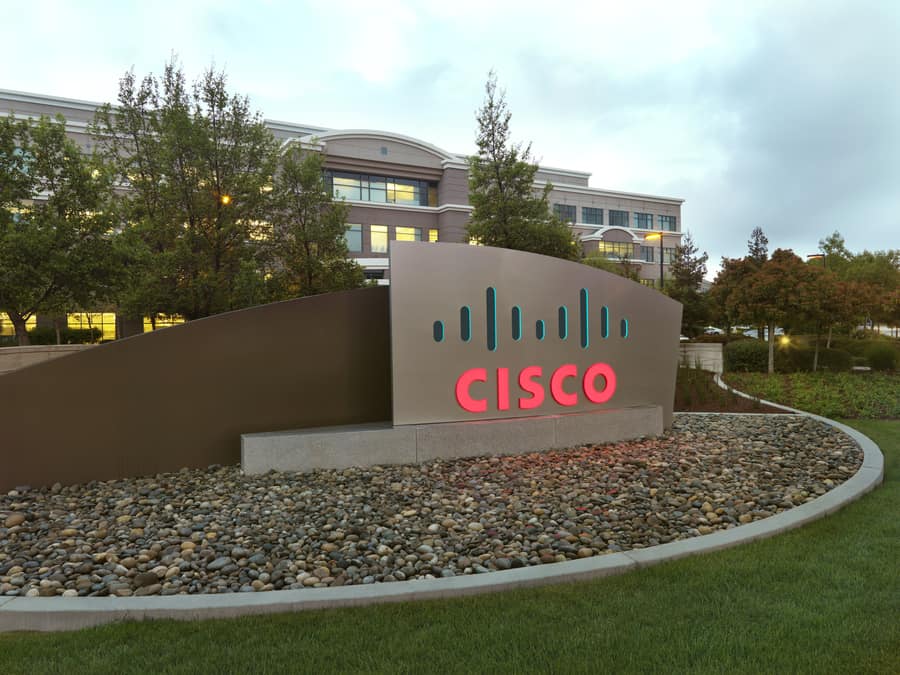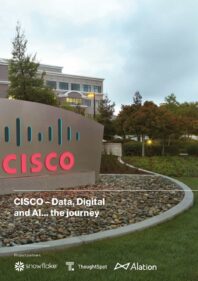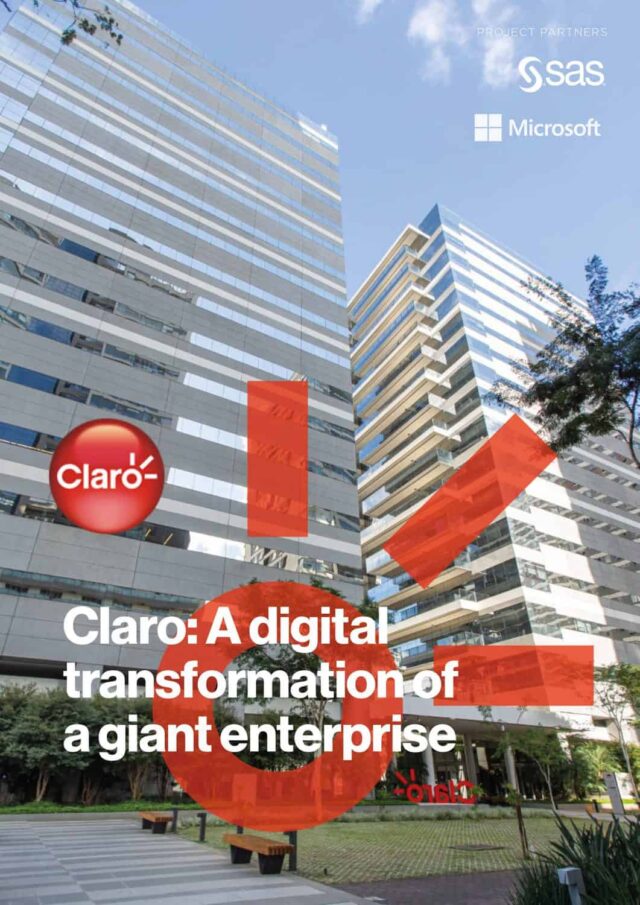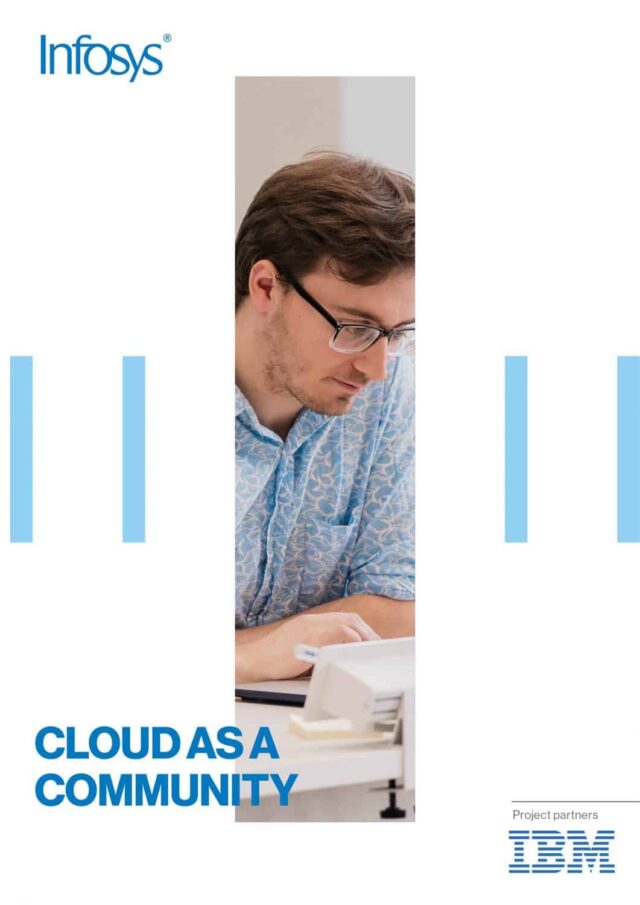Dr. Christian Vogt is Cisco’s Chief Innovation Officer of Data & Analytics, responsible for driving the adoption of digital, advanced analytics, and artificial intelligence at Cisco…
Across the globe and every sector, enterprises are looking to transform their offerings and operations by harnessing data-driven, digital technologies. For many, the necessity to digitally transform is seen as a competitive edge in the marketplace. For others, it is simply a case of transform or die. Either way, no one wants to or could afford to, ignore the potential of digital and data. But, away from the headline-grabbing technologies that drive this trend, what does innovation and transformation actually look like at ground level?

Cisco is an American multinational technology conglomerate that sells networking, collaboration, and cybersecurity hardware and software. Cisco’s technology is utilized in industries as diverse as smart cities and transportation, healthcare and manufacturing, financial services and retail, government and education.
Cisco helps its clients adapt to an ever-changing world by providing the building blocks of a digital ecosystem that allows more agile and efficient communication alongside operational prowess. But what about Cisco itself? What does transformation look like inside this Silicon Valley giant, and how does it successfully harness data-driven, digital technologies to improve its own operations to boost growth and profitability?
We caught up with Dr. Christian Vogt, Cisco’s Chief Innovation Officer of Data & Analytics at his Silicon Valley office. Christian’s mission is to drive the adoption of digital, advanced analytics, and artificial intelligence at Cisco, and to incubate and scale the capabilities needed to accomplish this, both inside his organization and across the company. Some of these technologies are developed by Cisco’s own engineers, while others are the result of partnering. To achieve the latter, Christian has established an open-innovation arm that partners closely with world-class startups and venture capital firms in Silicon Valley and beyond. “My goal is to make us a more data-driven, digitally enabled, and AI-powered company,” Christian explains.
“There are three main objectives behind this,” he reveals. “First, we want to drive growth and profitability for the company. Second, we want to accelerate Cisco’s transformation to a recurring-revenue company, pivoting from a predominantly systems business to increasingly a purveyor of subscription software and network-as-a-service. And third, we want to further develop data literacy all across Cisco, by inspiring and empowering our colleagues to communicate and argue with data, to make decisions based on data, and to measure results and impact based on data.”
Christian leads two teams that work hand in hand to accomplish these three objectives. One is a team that acts as a trusted partner to the business functions on all things involving digital, advanced analytics, and AI. It works closely with business leaders to identify and prioritize opportunities to generate value from these technologies. “We then make build-versus-buy decisions for each opportunity, go out and find solutions, do our due diligence, and finally pilot, operationalize, and scale the use of the solutions in production,” says Christian. “These business leaders are our stakeholders. We meet with them on a regular basis and use these conversations to understand what is working well, what is not working well, and where they face challenges that can be addressed with new technologies. We also use the meetings to explain what these technologies can, and cannot, do for them. There is a certain amount of hype around some of these technologies, and so the latter is important. Then we jointly prioritize based on alignment with corporate strategy, as well as potential and feasibility.”
One of the key decisions Christian and his team have to address is the build-versus-buy decision. “Some solutions must be built in-house, be it because the opportunity is unique to Cisco, or because there are simply no suitable solutions available on the market. However, other solutions are better developed with partners,” he reveals. “If it’s a ‘buy’ decision, we go and find potential partners and do our due diligence. Once one or two partners have been short-listed, we proceed to arrange a pilot. And, if everything goes well and the pilot is successful, we scale the use of the technology in terms of number of users and geographic footprint.”
Key to this work is an external network of startups, venture capital firms, academia, and likeminded corporates, which Christian and his team are cultivating. This enables Cisco to not only identify potential partners to work with, but to stay on top of emerging technologies, novel use-cases for these technologies, and best practices for deployment. “We learn much from our external network,” Christian explains. “The startups, venture capital firms, universities, and other corporates are our external network, and the leaders of Cisco’s various business functions are our internal network. We are in the middle: essentially acting as the matchmaker.

Christian’s second team drives data literacy across the company, for all roles and at every level. “We do this with a portfolio of educational programs, an array of global events that run on a regular basis throughout the year, and various tools we provide to help data practitioners be successful and collaborate efficiently.” A big part of being data-literate is about asking the right questions, understanding which data is relevant, and interpreting data critically. Another major part is about effectively communicating with data. And a third part is about leading and making decisions in a data-driven way.
About three years ago, Cisco established its Data & Analytics Office to help the company become more data-driven. “The initial focus was on data,” Christian explains. “The office defined and implemented the master data as a ‘single point of truth’ for the company, established data governance, and began to provision self-service tools to let business analysts across Cisco consume the data. Then, the office started to develop a range of business intelligence applications that make use of the data, helping business leaders across Cisco to make more informed decisions.”
Christian joined Cisco after the company had decided to leverage advanced analytics and AI more meaningfully across the company. “We realized that, moving forward, a significant portion of the value created from our data would come from these technologies,” he explains. “So, we wanted to drive the adoption of AI beyond a pilot here and there, and instead operationalize them at scale.” However, deploying AI applications requires a different and significantly more comprehensive process than deploying data and business intelligence tools. “This is not just a new technology,” Christian says. “You also need a new approach, and a set of fresh capabilities, to deploy AI successfully at scale,” he explains. “The typical data and business intelligence tools are dashboards and, in comparison, more straightforward to deploy. AI applications, in turn, are generally operational and embedded into business processes, which means you will end up changing the way people work, day to day.”
The deployment of AI applications, therefore, requires a consultative approach. You cannot simply build the application and wait for adoption; you also need to help your business stakeholders through the change. This is the hard part that many companies struggle with. “The journey we go through, together with our business stakeholders, which prioritizes, validates, operationalizes, and scales new technologies, is as important as, if not more important than, the technologies themselves. We call it the ‘stakeholder journey.’ This is intentionally reminiscent of the term ‘customer journey’ that our colleagues inside the go-to-market functions use because, at the end of the day, our stakeholders are the internal customers of the Data & Analytics Office. Executed well, one successful AI initiative will generate demand for further initiatives. So, in a way, the stakeholder journey becomes a flywheel for the adoption of the technology.”
According to Christian, everything starts with the external network: startups, venture capital firms, academia, likeminded corporates – in order to identify emerging technologies, novel, high-impact applications for these technologies, and proven best practices for deployment and scaled operationalization of these applications. “Some technologies we build ourselves, some come from leading vendors, and a good portion come from startups at the cutting edge of innovation,” he explains. “One reason behind working with venture firms, and not just with startups, is because they are our amplifier. They help us find the startups we are looking for.”
There are several key criteria Cisco uses to select startups to work with. “We prefer startups to have gone through two or more funding rounds, meaning they have been endorsed by investors at least twice. At that stage, startups will also typically have a number of paying customers already. The sweet spot for us is series A and series B.”

Armed with all this information, Christian and his team then reach out to their internal stakeholders. The goal? To build a strong relationship with business leaders across Cisco for whom digital technologies, advanced analytics, and AI could be a game-changer. “The goal is to become the trusted partner for our business stakeholders,” says Christian. “And that starts with education. ‘What specifically can this technology do for me? How can it help me do better, or more efficiently, what I do day to day?’”
To get a discussion with business stakeholders started, Christian and his team might bring a few examples from the startup space that could potentially be interesting for them, just to get the discussion going and get the “creative juices flowing.” “At the end of the day, though, this needs to be a needs-driven exercise. You need to find pain points that are really keeping people up at night, and only then start looking for a solution. Therefore, in your discussion with your stakeholders, you should get to a point where you start to intimately understand the stakeholders’ day-to-day work. What is working well, what is not working well, and where can these new technologies help.”
Having identified a set of applications for the new technologies, there is then a need for prioritization. “You can’t start everywhere at once, and so you prioritize upon three criteria: potential, feasibility, and alignment with corporate strategy. The latter is important, yet often overlooked. If something is aligned with corporate strategy, you can be certain that people will invest the time, energy, and resources necessary to make it successful. If something is not aligned with corporate strategy, all too often, after the initial excitement, it will quickly wear off and people will lose track of it. So, it has to be aligned with corporate strategy.”
The other two dimensions are potential and feasibility. Potential in terms of the return on investment that Cisco can extract from this, and the feasibility of just how likely this will succeed. “Has this business stakeholder already done something with AI in the past? Have they had experience with change management and transforming the way they work? Maybe they have used some other digital technology before. Using this prioritization criteria, you will know pretty quickly which applications are the no-brainers – the ones keenly aligned with corporate strategy, with a high return on investment, and a high feasibility. The second pocket would be the low-hanging fruit – the ones with less potential, but still high feasibility. And the third would be the ‘big bets,’ or applications with high potential, but lower feasibility. These are the riskier ones because they are more difficult to execute. Then, almost as a part of this, you decide if this is going to be bought off the market or built in-house. Some applications are unique to Cisco, or simply not available on the market. Clearly, you have to build those in-house. The Data & Analytics Office has a very strong team of data scientists, data engineers, and software engineers who can do this. But it doesn’t make sense to build in-house if a good fit already exists. And by a “good fit,” I mean: Is it a technology that does what it’s supposed to do, that scales and is sufficiently customizable to Cisco’s needs? Will the team make a good, trusted, long-term partner for Cisco? If that is available, there is no reason in the world to reinvent the wheel in-house. It would always take you longer and you would nearly always pay more overall, end to end.”

Ensuring you have the right team in place is crucial to successfully operationalize and scale any new technology, and this team is naturally cross-functional. “We work with data, and data is sensitive,” Christian explains. “So the team is always very interdisciplinary. It includes the IT organization and the cybersecurity team, as both have to sign off on the new technology to validate it reaches our security standards. It is a very rigorous process, as you can imagine. Depending on the use-case, the privacy office is also part of the team, as are human resources and the workers councils. And when we partner, you have the procurement organization as well. Add my own organization, the Data & Analytics Office, and you have a highly cross-functional team. Because you will need the help of these organizations again and again, it is usually a good idea to find a contact person, a liaison, inside each of them.”
The big difference between piloting an application and operationalizing that application at scale is that, during a pilot, you can work with the “early adopters,” the employees most excited about trying something new, but, once you scale, everyone will be using the application. Scaling is the phase in the stakeholder journey where change management becomes paramount. “You need to work hand in hand with your business stakeholders to make sure the employees understand what is happening, why the new application makes sense, and how to use it. AI applications are operational applications. They change business processes, so the day-to-day work of the employees changes. To motivate the employees to join you in this journey, it is often a good idea to make sure that others in your company know about it. Explain why it is innovative, make the participating employees shine.
And not just the participating employees might get excited: Other potential stakeholders will see your initiative and might come to you and say, ‘Hey, can we do something like this as well?’ Thus, a successful initiative becomes a tool for spreading the message about the value of digital technologies, advanced analytics, and AI. And this closes the circle. Because by getting one initiative over the finish line, you actually seed the next success, too.









